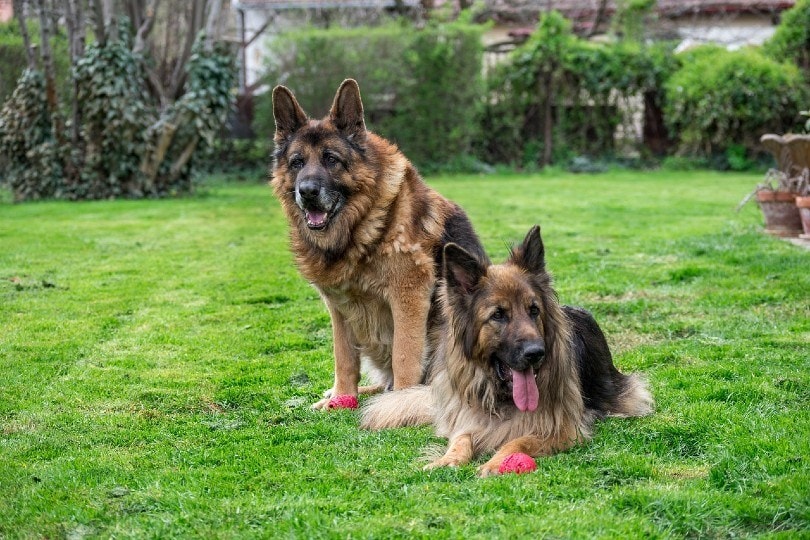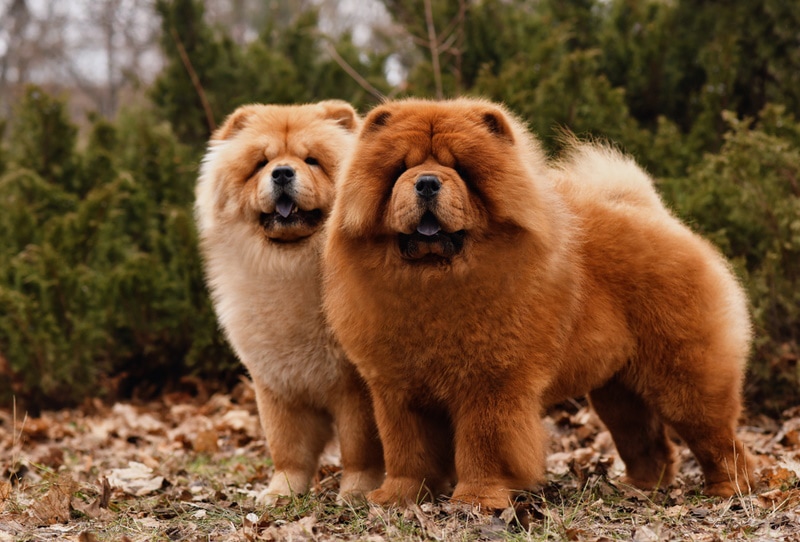Click to Skip Ahead
Inbreeding isn’t as common as it once was in dog breeding, but some breeders still force males to mate with their daughters. This practice usually produces puppies that are identical to the father. When a father mates with a daughter, the offspring’s genes are 75% identical to the father’s. Inbreeding helps create true-breed dogs with particularly desirable traits.
But are there risks or consequences of breeding father-to-daughter dogs? Yes, and this article highlights them all.

Risks & Consequences of Breeding Father to Daughter Dogs
Although inbreeding can be beneficial, the risks outweigh the benefits. The Kennel Club has banned the practice, acknowledging the likelihood of the subsequent offspring inheriting severe health conditions.
These risks include:
1. Fertility Problems
Breeding father-daughter dogs can increase infertility. This is because these inbred dogs lack gene variation, which is the difference in the DNA sequence in their genomes. Since the mother and father share the same genes, reports indicate that male inbred puppies have lower fertility rates than purebreds.
Inbred females are more likely to experience an absorbed litter. Puppy absorption occurs when the fetuses die and disintegrate in the pregnant female’s womb. The remains undergo enzymatic breakdown. The females also suffer from dystocia, a condition where they undergo difficult or abnormal labor.
Dystocia in inbred females occurs when the litter has congenital disabilities or is larger than regular-sized utero puppies. This condition complicates dog pregnancy, and the females often deliver via C-section. In addition, female inbred dogs deliver unhealthy puppies with a high mortality rate.

2. Limits Gene Pool
A gene pool is the genetic diversity in a population at a given time. Animals with a large gene pool have extensive genetic diversity. They can withstand challenges and stresses posed by their environmental conditions. The large gene pool allows growth and variety throughout the generational lines.
Inbred dogs, however, have small gene pools that make the species prone to extinction when faced with environmental stresses. Close inbreeding damages the potential of the gene pool expanding and makes the generational lines more susceptible to genetic disorders.
Did you know that inbreeding a dog for more than six generations reduces the genetic variation by over 90%? This puts the inbred dog at risk in case of environmental changes or diseases. They are less likely to survive these changes.
3. Congenital Defects
Congenital disabilities are functional or structural anomalies that develop during intrauterine life. Breeding a father dog to a daughter can transfer abnormal genes to the litter. With inbreeding, recessive genes are more likely to be prevalent in the offspring since the father and mother share similar alleles in their genes. For this reason, it is not uncommon to see inbred puppies with eye disorders, abnormal bodies and faces, cancer, system disorders, and skeletal deformities.
These defects impact the puppies’ quality of life and their average lifespan. Owners also face the challenge of raising money for treatments or the decision to euthanize the pet. Unfortunately, some congenital disabilities aren’t initially noticeable. Some owners will raise healthy dogs, but the pups suddenly get sick because of an existing congenital disability.

4. Health Problems
To understand how inbreeding causes health problems, take the Cavalier King Charles as an example. They’re prone to heart problems, and several Cavalier King Charles dogs die from heart Mitral Valve Disease (MVD).
If a father mates with the daughter and both are susceptible to MVD, this condition will be heightened in their offspring. The results? A sickly litter with a high mortality rate.
5. Behavior Difficulties
Inbred dogs tend to display abnormal behavioral issues. For instance, they lack affection, are more anxious and impulsive, and have higher aggression and irritation levels. They may also be more anxious and less intelligent than other dogs of the same breed.

Ethical Concerns of Breeding Father to Daughter in Dogs
Ethically, it is unconscionable to breed father and daughter dogs. Inbreeding is what humans refer to as incest. Allowing inbreeding is reprehensible because it puts the lives of many dogs at risk.
To illustrate, consider the risks we discussed. Why would anyone breed a father and daughter dog only to incur expensive medical bills or be forced to euthanize a beloved pet? It’s best to avoid this practice and breeders who use it.

Frequently Asked Questions
Can I Breed Dogs With the Same Father?
Breeding half-sibling dogs increases the coefficient of inbreeding. This, in turn, increases the likelihood of bad behavioral traits, diseases, and disabilities in the offspring. Increased depression, a reduced lifespan, and dystocia are some of the risks of breeding half-siblings.
Are There Consequences of Breeding a Mother Dog With Her Son?
Yes, there are. It’s the same as breeding a father dog to a daughter. This breeding produces less diverse DNA in the litter because the genetic information is repeated. The lack of genetic diversity means the offspring will be less adaptable and prone to allergies, malformations, hereditary diseases, and a shorter lifespan.

Conclusion
Never crossbreed a father dog with a daughter. Although there are chances of having a healthy dog, the risk of having a dog with serious health issues is even greater. Inbreeding reduces the offspring’s genetic variability and life span and makes them more prone to hereditary diseases. It’s vital to avoid this risky and cruel practice.
See also:
- 17 Common Dog Reproductive Problems: Vet Reviewed Signs & Treatments
- Puppy Absorption in Dogs: Vet Approved Definition, Causes & What to Know
Featured Image Credit: Crystal Alba, Shutterstock











